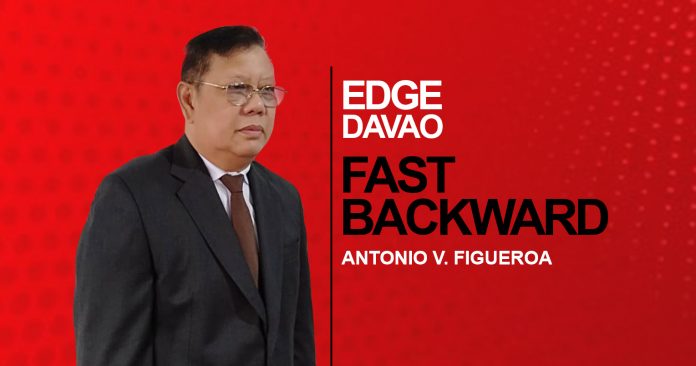Next to the Bank of the Philippine Islands (BPI), established on August 1, 1851, as El Banco Español Filipino de Isabel II and the country’s oldest, Monte de Piedad y Caja de Ahorros, a Catholic outfit, is the second oldest, organized in 1882 and is the first savings bank in the archipelago. Seven years earlier, Hongkong Shanghai Banking Corporation (HSBC), a foreign lending institution, started operating in Binondo in November 1875.
In Davao City, the Monte de Piedad branch used to occupy the space beside the lot of the now defunct Mila’s Tailoring, which is now leased to Medisense Laboratory Clinic, Inc., right next to the Jehovah’s Witnesses’ compound along Claveria (C.M. Recto) Street.
The idea of having a charitable banking institution was proposed in March 1880 by Spanish governor-general Domingo Moriones Murillo to help the needy through a model that extends a modest interest and gives out loans using the loanee’s tangible properties as collateral. As a result, he issued a decree creating the Monte de Piedad with P33,959, Mexican currency, from the Obras Pias of the Casa de Misericordia as an initial deposit of the new institution.
On July 20, 1882, the bank was opened in Intramuros, Manila, based on the Monte de Piedad de Madrid rules, and started operations on August 2, 1882.
When the Americans came, the charitable institution had outstanding loans of about P900,000 that were extended to the poor at 6% a year, “secured by the pledge of jewelry, household articles and apparel delivered into the possession of the institution, or, to a small extent, by real estate mortgages.” It operated like today’s pawnshops and was at the time managed by the Catholic church or whoever was the head of the Manila See.
A man named Manuel Luis M. Quezon, who later became the Commonwealth president, had worked in the bank in 1900 with a monthly take-home pay of P25.
Against the odds, the bank, with the archbishop of Manila as its president, survived the global war and later financial crises; it even expanded its portfolio by counting loans to the poorest of the poor, including tricycle drivers and teachers. But the program was eventually abused, which affected the liquidity of the lending bank.
In October 1994, the program was stopped, and the bank temporarily ceased operations in April 1997. Through the brokering of the Bangko Sentral ng Pilipinas, it was sold to Keppel Group of Singapore. At the time, it only had assets of US$90 million and 30 branches. The new owner invested US$40 million to cover unfunded manager’s cheques issued before the bank closed.
On October 5, 2005, General Electric Co. of Connecticut, USA, acquired Monte de Piedad, renamed as Keppel Bank, for $25.8 million. In March 2007, GE Money Bank, the reincarnation of Monte de Piedad, reported asset growth of over 10% with assets reaching P8.9 billion.
Two years later, BDO Unibank took over the erstwhile Catholic banking outfit and agreed to a share-whap deal with GE to acquire a minority stake in BDO Unibank, the equal of 1.5% stake, with an option to increase its holdings to up to 10%. The takeover involved the inclusion of GE Money Bank’s 31 branches, 30,000 customers, and 38 ATMs nationwide.
Following the completion of the deal, BDO Unibank refurbished the Davao branch of the defunct charitable institution and gave it a new name. But as soon as the new owner had opened a more spacious building on a prime lot situated just over 100 meters away, the old, one-story Monte de Piedad was relinquished and leased to a high-end housing company.
A reminder that the lending institution has contributed to the city’s progress is the Monte de Piedad Housing at Maa.




